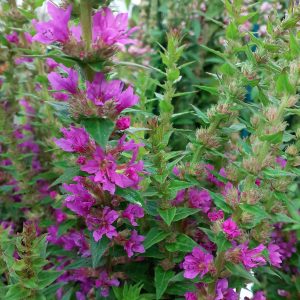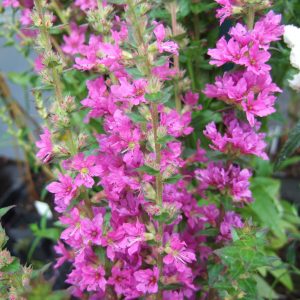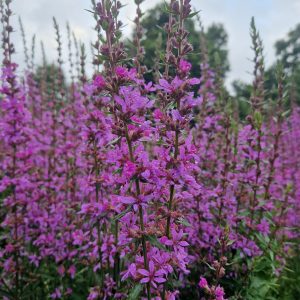Lythrum, commonly known as loosestrife, is a beautiful perennial that adds vibrant colour to gardens. Follow this comprehensive planting guide to ensure successful growth and profuse flowering:
Site Selection
Sunlight: Choose a location with full to partial sun exposure. Lythrum plants thrive in sunlight but can tolerate some shade.
Soil Type: Lythrum prefers moist, well-draining soil. While it can adapt to various soil types, consistent moisture is essential for optimal growth.
Planting Time
Spring or Autumn Planting: Plant lythrum in the spring after the last frost or in the autumn. This allows the plant to establish itself before extreme weather conditions set in.
Planting Process
Seed Planting: If sowing seeds, scatter them on the soil surface and lightly press them into the soil. Keep the soil consistently moist until seedlings emerge.
Transplanting: If using seedlings, space them about 12 to 18 inches apart. Dig a hole, place the seedling, and fill with soil. Water thoroughly.
Watering
Establishment Period: Water newly planted lythrum regularly during the first few weeks to help establish a strong root system.
Regular Watering: Once established, water consistently, especially during dry spells. Keep the soil consistently moist and provide additional water during hot weather.
Mulching
Mulch Application: Apply a layer of organic mulch around the base of the plants to conserve moisture, suppress weeds, and regulate soil temperature.
Fertilisation
Balanced Fertiliser: In early spring, apply a balanced, slow-release fertiliser to encourage healthy growth. Follow package instructions for application rates.
Pruning
Deadheading: Remove spent flowers regularly to encourage continuous blooming. Deadheading also improves the overall appearance of the plant.
Division
Periodic Division: Lythrum can benefit from division every few years to maintain vigour. Divide in early spring or autumn, replanting healthy sections.
Winter Care
Mulching (Cold Regions): In colder climates, apply a layer of mulch around the base of the plant in the autumn to protect it during winter.
Pest and Disease Management
Vigilance: Keep an eye out for pests like aphids and diseases such as powdery mildew. Treat promptly with appropriate measures
Enjoy the Blooms
Blooming Season: Lythrum typically blooms from late spring to early autumn, providing a long-lasting display of colourful flowers.
By following these guidelines, you’ll create an optimal environment for your lythrum plants to thrive and enhance the beauty of your garden. Customise care based on your specific lythrum variety and local growing conditions.






